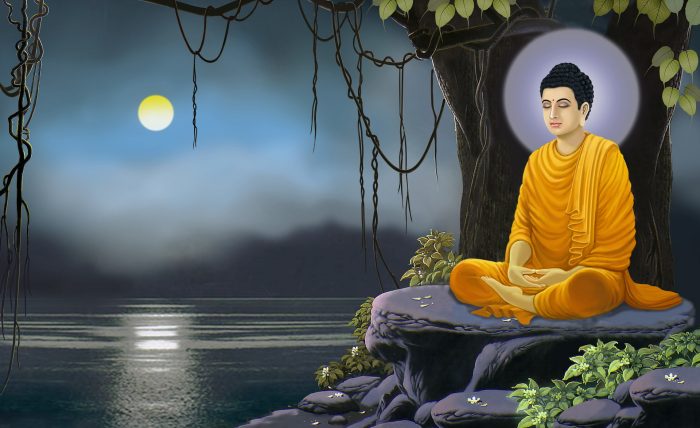Lucky you! This is the second part of a series. (Read the first part here.)
Let’s explore the Buddhist pantheon.
By explore, I mean to say, as a Westerner, I don’t have first-hand knowledge of this vast world. So, in writing this, I’m relating what I’ve learned with the awareness that I don’t know everything on the subject.
The Buddha lived and studied in ancient India around 500 BC. As prince Siddhārtha Gautama, he was one of the most educated people in the land. And as a seeker, he was fully immersed in the various philosophies and religions of that time.
And of course, one of India’s main religions was—and continues to be—Hinduism, with its vast pantheon of gods and goddesses. At that time, Greece, Rome, Egypt, and much of Europe under Celtic culture also celebrated pantheons, all slightly different, yet all carrying similar archetypes and themes.
You could say that, at the time of the Buddha, most of the world believed in the existence of multiple deities. The world of gods and demi-gods was close and involved with that of humans.
And indeed, even today, with our long traditions of monotheism in the West, we still carry myths of layered, multi-dimensional heavens populated by multiple beings with special powers. Whether you call them angels, saints, archetypes, celestial spheres, deities, or gods and goddesses, there continue to be traditions of belief in extraordinary, powerful entities who can be available to us at our calling.
It was in this context of many gods and goddesses that the Buddha became enlightened. In his enlightenment stories, he even travels to celestial realms (or heavens) to teach the gods, goddesses (and his own mom) the path to enlightenment.
From there, we Buddhists have new classifications of deities and other extraordinary beings: those who convert to Buddhism and those who oppose it. Thus, we have prayers and other symbolism that includes some of the Hindu panthea.
But Buddhism cosmology goes beyond gods and demi-gods to include other powerful beings. The Buddha taught creatures on multiple levels—a unique characteristic of the divine speech of a Buddha. The enlightened teachings spoke to humans, gods, demi-gods, and even special classes of beings in lower realms: animals, powerfully intelligent Nagas, and special classes of hungry ghosts and demons.
Thus, in the Buddhist pantheon, we find the enlightened activity of Buddhist gods, Buddhist human bodhisattvas, and Buddhist spirits in the form of protectors.
And there we aren’t even talking about actual Buddhas. The above beings are ones with power and knowledge of the Dharma who have pledged to keep Buddhist morality and work toward enlightenment, and thus are on the path to become Buddhas.
The topic of Buddhist deities presents a vast field of enlightened beings and those striving toward enlightenment. But when you include actual Buddhas as well, that field of enlightened activity increases exponentially. In King of Prayers, we are instructed to imagine every atom in the universe as a Buddha-field populated by countless Buddhas of the past, present, and future. Surpassing grains of sand in the world, infinite Buddhas permeate quantum realms, spreading out beyond the range of thought itself.
In the Tibetan language, the word deity or god is translated literally as superior and rare. Whenever I read the word “god” in this context, I find it helpful to switch out the word deity with those two words: superior and rare. It skips the early programming of monotheism that causes me to dismiss all other gods.
By doing this mental sleight of hand, we can open our minds to the possibility and wonders of many spheres of existence—the wonders of powerfully enlightened realms.
AUTHOR: ANGELA KYLE
IMAGE: DUONGNGOC1987/PIXABAY


This account does not have permission to comment on Elephant Journal.
Contact support with questions.